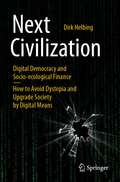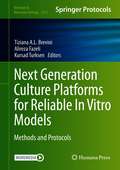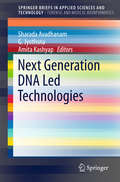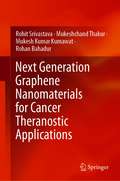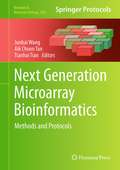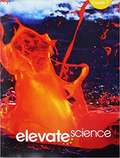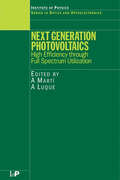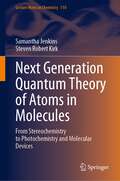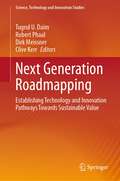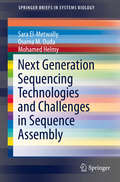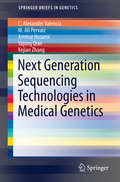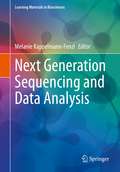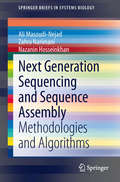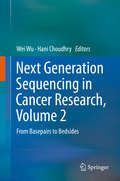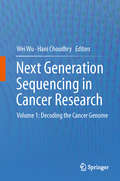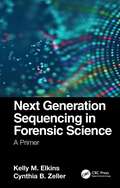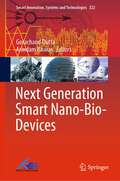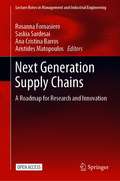- Table View
- List View
Next Civilization: Digital Democracy and Socio-Ecological Finance - How to Avoid Dystopia and Upgrade Society by Digital Means
by Dirk Helbing"Digital transformation" sounds harmless, given that the explosion in data volumes, processing power and Artificial Intelligence has driven humanity and the entire world to a point of no return. We will surely see a new civilization, but we are at a crossroads. The future needs to be re-invented, decisions must be taken. After the automation of factories and the creation of self-driving cars, the automation of society is on its way. But there are two kinds of automation: a centralized top-down control of the world and a distributed control approach, supporting local self-organization. Using the power of today’s information systems, governments and big tech companies seem to engage in the first approach. Might they even build a „digital Crystal Ball“ that knows almost everything, including your personality, and a super-intelligent "digital God“ to control what we do? We are much closer to such „science fiction scenarios“ than you probably think. In this much expanded second edition of "The Automation of Society is Next: How to Survive the Digital Revolution" (2015), the author discusses lessons learned on digital democracy, aspects of transhumanism and far-reaching thoughts about life in the digital age and what it may mean to be human in the future.
Next Gen PhD
by Melanie V. SincheAn upper-level degree is a prized asset in the eyes of many employers, and nonfaculty careers once considered Plan B are now preferred by the majority of science degree holders. Melanie Sinche profiles science PhDs across a wide range of disciplines who share proven strategies for landing a rewarding occupation inside or outside the university.
Next Generation Batteries: Realization of High Energy Density Rechargeable Batteries
by Kiyoshi KanamuraIn this book, the development of next-generation batteries is introduced. Included are reports of investigations to realize high energy density batteries: Li-air, Li-sulfur, and all solid-state and metal anode (Mg, Al, Zn) batteries. Sulfide and oxide solid electrolytes are also reviewed.A number of relevant aspects of all solid-state batteries with a carbon anode or Li-metal anode are discussed and described: The formation of the cathode; the interface between the cathode (anode) and electrolyte; the discharge and charge mechanisms of the Li-air battery; the electrolyte system for the Li-air battery; and cell construction. The Li-sulfur battery involves a critical problem, namely, the dissolution of intermediates of sulfur during the discharge process. Here, new electrolyte systems for the suppression of intermediate dissolution are discussed. Li-metal batteries with liquid electrolytes also present a significant problem: the dendrite formation of lithium. New separators and electrolytes are introduced to improve the safety and rechargeability of the Li-metal anode. Mg, Al, and Zn metal anodes have been also applied to rechargeable batteries, and in this book, new metal anode batteries are introduced as the generation-after-next batteries.This volume is a summary of ALCA-SPRING projects, which constitute the most extensive research for next-generation batteries in Japan. The work presented in this book is highly informative and useful not only for battery researchers but also for researchers in the fields of electric vehicles and energy storage.
Next Generation Culture Platforms for Reliable In Vitro Models: Methods and Protocols (Methods in Molecular Biology #2273)
by Kursad Turksen Alireza Fazeli Tiziana A. L. BreviniThis detailed book collects original protocols aimed at encouraging and stimulating the scientific community to design and produce models for the laboratory that mimic cell guidance conditions as they occur in vivo. The protocols collected describe powerful strategies to exploit chemical cues involved in cell differentiation processes. Special emphasis is given to the use of methods for purification and characterization of exosomes and other secreted vesicles, as well as micro and non-coding RNAs, that have been demonstrated to control the tuning of the in vivo micro and macro environment in order to ensure the optimal soluble environment in vitro. Written for the highly successful Methods in Molecular Biology series, chapters include introductions to their respective topics, lists of the necessary materials and reagents, step-by-step, readily reproducible laboratory protocols, and tips on troubleshooting and avoiding known pitfalls. Authoritative and practical, Next Generation Culture Platforms for Reliable In Vitro Models: Methods and Protocols serves as an ideal guide for researchers working toward developing these vital testing models for preclinical studies.
Next Generation DNA Led Technologies
by Sharada Avadhanam G. Jyothsna Amita KashyapThis brief highlights advances in DNA technologies and their wider applications. DNA is the source of life and has been studied since a generation, but very little is known as yet. Several sophisticated technologies of the current era have laid their foundations on the principle of DNA based mechanisms. DNA based technologies are bringing a new revolution of Advanced Science and Technology. Forensic Investigation, Medical Diagnosis, Paternity Disputes, Individual Identity, Health insurance, Motor Insurance have incorporated the DNA testing and profiling technologies for settling the issues.
Next Generation Graphene Nanomaterials for Cancer Theranostic Applications
by Rohit Srivastava Mukeshchand Thakur Mukesh Kumar Kumawat Rohan BahadurThis book focuses on the use of graphene and its derivatives for application in cancer diagnosis and therapy. Readers are introduced to graphene nanomaterial history, synthesis procedures, properties, modifications, and applications in cancer research and development. The wide-ranging properties of graphene nanomaterials can be utilized for various cancer therapeutic and diagnostic applications. The contents discuss these applications with simple graphical overviews and provide comprehensive detail for a better understanding of the state of the art. The book will be of interest to professionals and academic researchers alike.
Next Generation Microarray Bioinformatics
by Junbai Wang Tianhai Tian Aik Choon TanRecent improvements in the efficiency, quality, and cost of genome-wide sequencing have prompted biologists and biomedical researchers to move away from microarray-based technology to ultra high-throughput, massively parallel genomic sequencing (Next Generation Sequencing, NGS) technology. In Next Generation Microarray Bioinformatics: Methods and Protocols, expert researchers in the field provide techniques to bring together current computational and statistical methods to analyze and interpreting both microarray and NGS data. These methods and techniques include resources for microarray bioinformatics, microarray data analysis, microarray bioinformatics in systems biology, next generation sequencing data analysis, and emerging applications of microarray and next generation sequencing. Written in the highly successful Methods in Molecular BiologyTM series format, the chapters include the kind of detailed description and implementation advice that is crucial for getting optimal results in the laboratory. Authoritative and practical, Next Generation Microarray Bioinformatics: Methods and Protocols seeks to aid scientists in the further study of this crucially important research into the human DNA.
Next Generation Middle Grade Science 2019 Earth Student Edition Grade 6
by Prentice-Hall StaffElevate Middle Grade Science 2019 Engineering Design Notebook Grade 6
Next Generation Middle Grade Science: Grade 6
by Prentice-Hall StaffElevate Middle Grade Science 2019 Student Edition Grade 6
Next Generation Multilayer Graded Bandgap Solar Cells
by A. A. Ojo W. M. Cranton I. M. DharmadasaThis book will guide Photovoltaics researchers in a new way of thinking about harvesting light energy from all wavelengths of the solar spectrum. It closes the gap between general solar cells books and photovoltaics journal articles, by focusing on the latest developments in our understanding of solid-state device physics. The material presented is experimental and based on II-VI thin-film materials, mainly CdTe-based solar cells. The authors describe the use of new device design, based on multilayer graded bandgap configuration, using CdTe-based solar cells. The authors also explain how the photo-generated currents can be enhanced using multi-step charge carrier production. The possibility of fabricating these devices using low-cost and scalable electroplating is demonstrated. The value of electroplating for large area electronic devices such as PV solar panels, display devices and nano-technology devices are also demonstrated. By enabling new understanding of the engineering of electroplated semiconductor materials and providing an overview of the semiconductor physics and technology, this practical book is ideal to guide researchers, engineers, and manufacturers on future solar cell device designs and fabrications.Discusses in detail the processes of growths, treatments, solar cell device fabrication and solid state physics, improving readers’ understanding of fundamental solid state physics;Enables future improvements in CdTe-based device efficiency;Explains the significance of defects in deposited semiconductor materials and interfaces that affect the material properties and resulting device performance.
Next Generation Photovoltaics: High Efficiency through Full Spectrum Utilization (Series in Optics and Optoelectronics)
by Antonio Mart and Antonio LuqueAlthough photovoltaics are regarded by many as the most likely candidate for long term sustainable energy production, their implementation has been restricted by the high costs involved. Nevertheless, the theoretical limit on photovoltaic energy conversion efficiency-above 85%-suggests that there is room for substantial improvement of current comme
Next Generation Quantum Theory of Atoms in Molecules: From Stereochemistry to Photochemistry and Molecular Devices (Lecture Notes in Chemistry #110)
by Samantha Jenkins Steven Robert KirkThis book begins by providing a simplified version of the computational quantum chemistry sufficient to calculate the wavefunctions that are the basic input of NG-QTAIM. Enough basic (scalar) QTAIM theory is provided to understand the later chapters. In addition, our developments of scalar QTAIM are presented and activities at various levels of difficulty are provided for the readership to facilitate understanding. The topological origins of Quantum Theory of Atoms in Molecules (QTAIM) before explaining the highlights and consequences of the developments of Next-Generation QTAIM (NG-QTAIM) that is a 3-D vector-based realization of QTAIM. The book compiles all developments and extensions of Next-Generation QTAIM in one place for easy reference for those engaged in theoretical/computational chemistry. Essential insights into molecular switch functioning not available from the energy barrier or any scalar measures are presented along with a new measure to assess the efficiency of rotary molecular motors. The book also discusses how the treatment of external forces such as electric fields and laser irradiation is included in NG-QTAIM. This book benefits theoretical/computational chemists/physics/engineers, students (graduate and undergraduate) and chemical/pharmaceutical industry researchers who carry out chemical computations in universities and industries. Where appropriate, Target Learning Outcomes and Further Reading are provided along with a list of the scientific goals to be addressed in addition to a glossary table in the summary sections. Where applicable each chapter concludes by outlining benefits, limitations and suggestions for further investigations. All our NG-QTAIM publications are available as pre-prints in the form of .pdf files along with the corresponding supplementary materials at our BEACON website www.beaconresearch.org.
Next Generation Roadmapping: Establishing Technology and Innovation Pathways Towards Sustainable Value (Science, Technology and Innovation Studies)
by Dirk Meissner Tugrul U. Daim Robert Phaal Clive KerrRoadmapping is a structured visual approach for supporting strategic technology and innovation management, providing strategic navigational support (hence the “roadmap” metaphor) for technologists, designers, entrepreneurs, programme managers, executives, policy makers, other stakeholders involved in the formulation and implementation of strategy. This book brings together the latest developments in roadmapping, covering a range of practical issues and conceptual aspects. First, the book delves into the critical topic of strategic alignment within organizations, encompassing the interdependencies and synchronization of horizontal and vertical systems, connecting innovation priorities to strategic objectives, and the integration of key performance indicators. Then, the book concentrates on practical techniques and tools for roadmapping, including a template-based approach for technology venture funding. Social and digital aspects of roadmapping are explored, including workshop methods, considering how quantitative (analysis) and qualitative (expert) knowledge can be combined for improved strategic planning. Finally, a series of new case studies focusing on energy systems in Sub-Saharan Africa and Turkey illustrate the practical application of technology roadmapping and also provide useful insights. Roadmapping continues to evolve, as it is adapted to apply to new domains and strategic challenges, propagates to new sectors, and as new digital technologies such as AI emerge that radically affect strategy and innovation processes. The need for structured and engaging approaches such as roadmapping for navigating towards the future is essential.
Next Generation Science Standards: For States, By States
by Ngss Lead States“Next Generation Science Standards identifies the science all K-12 students should know. These new standards are based on the National Research Council’s A Framework for K-12 Science Education. The National Research Council, the National Science Teachers Association, the American Association for the Advancement of Science, and Achieve have partnered to create standards through a collaborative state-led process. The standards are rich in content and practice and arranged in a coherent manner across disciplines and grades to provide all students an internationally benchmarked science education. The print version of Next Generation Science Standards complements the nextgenscience.org website and: Provides an authoritative offline reference to the standards when creating lesson plans Arranged by grade level and by core discipline Printed in full color with a lay-flat spiral binding Allows for bookmarking”
Next Generation Sequencing
by Lee-Jun C. WongIn recent years, owing to the fast development of a variety of sequencing technologies in the post human genome project era, sequencing analysis of a group of target genes, entire protein coding regions of the human genome, and the whole human genome has become a reality. Next Generation Sequencing (NGS) or Massively Parallel Sequencing (MPS) technologies offers a way to screen for mutations in many different genes in a cost and time efficient manner by deep coverage of the target sequences. This novel technology has now been applied to clinical diagnosis of Mendelian disorders of well characterized or undefined diseases, discovery of new disease genes, noninvasive prenatal diagnosis using maternal blood, and population based carrier testing of severe autosomal recessive disorders. This book covers topics of these applications, including potential limitations and expanded application in the future.
Next Generation Sequencing Technologies and Challenges in Sequence Assembly
by Sara El-Metwally Osama M. Ouda Mohamed HelmyThe introduction of Next Generation Sequencing (NGS) technologies resulted in a major transformation in the way scientists extract genetic information from biological systems, revealing limitless insight about the genome, transcriptome and epigenome of any species. However, with NGS, came its own challenges that require continuous development in the sequencing technologies and bioinformatics analysis of the resultant raw data and assembly of the full length genome and transcriptome. Such developments lead to outstanding improvements of the performance and coverage of sequencing and improved quality for the assembled sequences, nevertheless, challenges such as sequencing errors, expensive processing and memory usage for assembly and sequencer specific errors remains major challenges in the field. This book aims to provide brief overviews the NGS field with special focus on the challenges facing the NGS field, including information on different experimental platforms, assembly algorithms and software tools, assembly error correction approaches and the correlated challenges.
Next Generation Sequencing Technologies in Medical Genetics
by C. Alexander Valencia M. Ali Pervaiz Ammar Husami Yaping Qian Kejian ZhangThis book introduces readers to Next Generation Sequencing applications in medical genetics. The authors discuss the direct application of next-generation sequencing to medicine, specifically, laboratory medicine or molecular diagnostics. The first part of the book contains chapters on sanger sequencing, NGS technologies, targeted-amplification and capture, and exome sequencing. The second part of the book focuses on genetic disorders diagnoses by NGS, prenatal diagnosis, muscular dystrophies, mitochondrial disorders diagnosis, and challenges in molecular diagnosis. Recent developments and potential future trends in NGS sequencing applications are highlighted, as well.
Next Generation Sequencing and Data Analysis (Learning Materials in Biosciences)
by Melanie Kappelmann-FenzlThis textbook provides step-by-step protocols and detailed explanations for RNA Sequencing, ChIP-Sequencing and Epigenetic Sequencing applications. The reader learns how to perform Next Generation Sequencing data analysis, how to interpret and visualize the data, and acquires knowledge on the statistical background of the used software tools. Written for biomedical scientists and medical students, this textbook enables the end user to perform and comprehend various Next Generation Sequencing applications and their analytics without prior understanding in bioinformatics or computer sciences.
Next Generation Sequencing and Sequence Assembly: Methodologies and Algorithms
by Ali Masoudi-Nejad Zahra Narimani Nazanin HosseinkhanThe goal of this book is to introduce the biological and technical aspects of next generation sequencing methods, as well as algorithms to assemble these sequences into whole genomes. The book is organized into two parts; part 1 introduces NGS methods and part 2 reviews assembly algorithms and gives a good insight to these methods for readers new to the field. Gathering information, about sequencing and assembly methods together, helps both biologists and computer scientists to get a clear idea about the field. Chapters will include information about new sequencing technologies such as ChIp-seq, ChIp-chip, and De Novo sequence assembly.
Next Generation Sequencing in Cancer Research, Volume 2
by Wei Wu Hani ChoudhryLatest generation sequencing revolutionizes the fields of cancer research and oncology. This follow-up volume focuses more extensively on single cell sequencing of cancer and trials in drug resistance. Another exciting feature is the bioinformatics tools given, that can be used on cancer genome studies. Scientists around the world are attempting to find the root cause of cancer. A reasonable cancer treatment plan and potential cure is more optimistic now with the unfolding of the cancer genome. The collective knowledge of how to leverage next generation sequencing in cancer research is paving the way. The important information provided in this volume will move the field forward in developing novel targeted cancer therapies.
Next Generation Sequencing in Cancer Research: Decoding the Cancer Genome
by Wei Wu Hani ChoudhryThis volume provides an interdisciplinary perspective of applying Next Generation Sequencing (NGS) technology to cancer research. It aims to systematically introduce the concept of NGS, a variety of NGS platforms and their practical implications in cancer biology.This unique and comprehensive text will integrate the unprecedented NGS technology into various cancer research projects as opposed to most books which offer a detailed description of the technology. This volume will present true experimental results with concrete data processing pipelines, discuss the bottleneck of each platform for real project in cancer research. In additional, single cancer cell sequencing as the proof of concept will be introduced in this book, along with cutting-edge information provided will help the intended audience to develop a comprehensive understanding of the NGS technology and practical whole genome sequencing data analysis and rapidly translate into their own research, specifically in the field of cancer biology.
Next Generation Sequencing in Forensic Science: A Primer
by Kelly M. Elkins Cynthia B. ZellerNext Generation Sequencing in Forensic Science: A Primer addresses next generation sequencing (NGS) specific to its application to forensic science. The first part of the book offers a history of human identity approaches, including VNTR, RFLP, STR, and SNP DNA typing. It discusses the history of sequencing for human DNA typing, including Sanger sequencing, SNaPshot, pyrosequencing, and principles of next generation sequencing. The chapters present an overview of the forensically focused AmpliSeq, ForenSeq, Precision ID, PowerSeq, and QIAseq panels for human DNA typing using autosomal, Y and X chromosome STRs and SNPs using the MiSeq FGx and Ion Torrent System. The authors outline the steps included in DNA extraction and DNA quantitation that are performed prior to preparing libraries with the NGS kits. The second half of the book details the implementation of ForenSeq and Precision ID to amplify and tag targets to create the library, enrich targets to attach indexes and adaptors, perform library purification and normalization, pool the libraries, and load samples to the cartridge to perform the sequencing on the instrument. Coverage addresses the operation of the MiSeq FGx and Ion Chef, including creating a sample list, executing wash steps, performing NGS, understanding the run feedback files from the instrument, and troubleshooting. ForenSeq and Precision ID panel data analysis are explained, including how to analyze and interpret NGS data and output graphs and charts. The book concludes with mitochondrial DNA (mtDNA) sequencing and SNPs analysis, including the issue of heteroplasmy. The final chapters review forensic applications of microbial DNA, NGS in body fluid analysis, and challenges and considerations for future applications. FEATURES Focuses on human identification using traditional and NGS DNA typing methods targeting short tandem repeats (STRs) Applies the technology and its application to law enforcement investigations and identity and ancestry single nucleotide polymorphisms (SNPs) for investigational leads, mass disaster, and ancestry cases Presents the underlying principles of NGS in a clear, easy-to-understand format for practitioners and students studying DNA in forensic programs This is the first book to prepare practitioners to utilize and implement this new technology in their lab for casework, highlighting early applications of how NGS results have been used in court. The book can be utilized for upper-level undergraduate and graduate students taking courses focused on NGS concepts. Readers are expected to have a basic understanding of molecular and cellular biology and DNA typing.
Next Generation Smart Nano-Bio-Devices (Smart Innovation, Systems and Technologies #322)
by Arindam Biswas Gorachand DuttaThis book addresses challenges for the development of a point-of-care-test platform. The book describes printed chip-based assay (Lab-on-a-Chip, Lab-on-a-PCB) for rapid, inexpensive biomarkers detection in real samples. The main challenges of point-of-care testing require implementing complex analytical methods into low-cost technologies. This is particularly true for countries with less developed healthcare infrastructure. Washing-free, Lab-on-Chip, and Lab-on-PCB techniques are very simple and innovative for point-of-care device development. The redox cycling technology detects several interesting targets at the same time on a printed chip. The proposed areas are inherently cross-disciplinary, combining expertise in biosensing, electrochemistry, electronics and electrical engineering, health care, and manufacturing. This book focuses on recent advances and different research issues in the nanobiotechnology-enabled biosensor technology and also seeks out theoretical, methodological, well-established, and validated empirical work dealing with these different topics.
Next Generation Supply Chains: A Roadmap for Research and Innovation (Lecture Notes in Management and Industrial Engineering)
by Rosanna Fornasiero Saskia Sardesai Ana Cristina Barros Aristides MatopoulosThis open access book explores supply chains strategies to help companies face challenges such as societal emergency, digitalization, climate changes and scarcity of resources. The book identifies industrial scenarios for the next decade based on the analysis of trends at social, economic, environmental technological and political level, and examines how they may impact on supply chain processes and how to design next generation supply chains to answer these challenges. By mapping enabling technologies for supply chain innovation, the book proposes a roadmap for the full implementation of the supply chain strategies based on the integration of production and logistics processes. Case studies from process industry, discrete manufacturing, distribution and logistics, as well as ICT providers are provided, and policy recommendations are put forward to support companies in this transformative process.
Next Generation Wireless Communication: Advances in Optical, mm-Wave, and THz Technologies (Signals and Communication Technology)
by Sudipta Das Mohammed El Ghzaoui Varakumari Samudrala Nageswara Rao MedikonduThis book provides an overview of the most common techniques and methods employed in wireless fields. Conversely, it delves into a detailed study of millimeter-wave (mm-wave) and terahertz (THz) systems, with a focus on various schemes for transmitting and receiving electromagnetic waves. The title comprehensively reviews key elements associated with wireless communications, emphasizing the generation and detection of mm and THz waves. It explores specifications, innovations in new materials for high-speed terahertz and millimeter-wave technology, and considerations related to components and system aspects. Additionally, the book explores the integration of machine learning (ML) and artificial intelligence (AI) in smart communication systems, along with potential applications for advanced wireless communications. Furthermore, it concentrates on recent advances and diverse research prospects in Next-Generation Wireless Communication Technologies. The book also seeks theoretical, methodological, well-established, and validated empirical work addressing these various topics.
